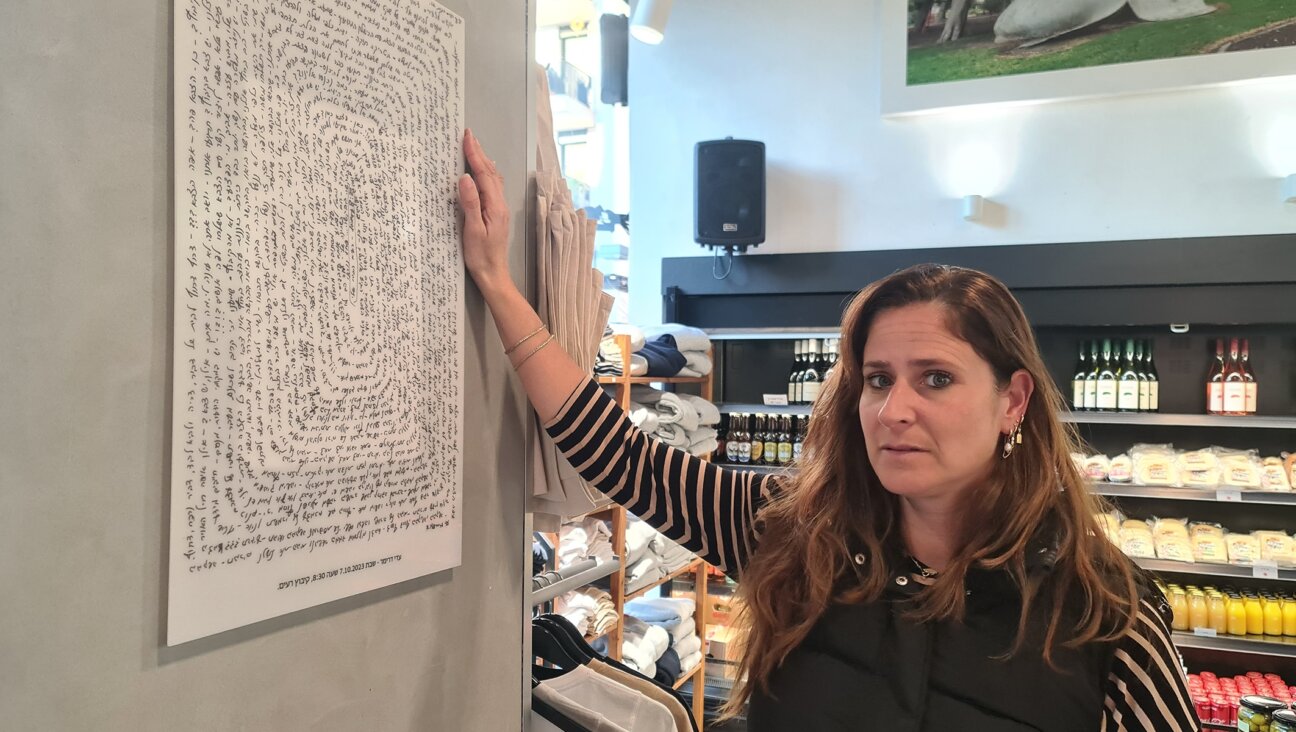Good Intentions Aren’t Enough for ‘Good and the True’

“The Good and the True,” a two-person play that just transferred to New York after runs in the U.K. and Belgium, unexpectedly became a potential nova-making vehicle.
The play originally starred Saul Reichlin as Milos Dobry (Dobry is Czech for “good”) and Isobel Pravda (Russian for “true” — hence the title), who played her grandmother Hana.
However, because of a glitch in a U.S. State Department computer, Isobel was unable to get her visa, and the producers, with limited access to the theater (a new show begins there in mid-September), had no choice but to start without her.
Enter understudy Hannah D. Scott. I was, of course, hoping for a Lou Gehrig or Leonard Bernstein moment, where a last-minute substitute steps in and becomes a star.
Sadly it’s not to be. Both Scott and Reichlin are competent, but are hampered by a script that is surprisingly vanilla.
“The Good and the True” is a production of the Svandovo Theater in Prague, and Daniel Hrbek, its director and manager, directed and helped compile this play.
Both actors’ stories were not written in the traditional manner, but taken from what the program calls “authentic testimonies.” I’m not sure testimony is the right word, but that is the just-the-facts vibe the play gives off. It is a then-I-did-this and then-I-did-that series of monologues that lack drama.
They also seem strangely painless. In an unintended comic moment, Dobry’s parents are shipped to Terezin, where Milos had been sent months earlier. They are shocked when they see him because— “Working in the butchery meant I had gained weight and looked so well – they were tears of joy.”
Hana is an actress also first sent to Terezin, where she acts in plays.
Both suffered; they were in the camps, for goodness sakes: Hana lost her husband; Milos his parents. But the overwhelming horror of what they went through never comes through.”
Moreover, there is no reason that these two particular people were chosen. They didn’t know each other and never interacted, though they both seemed to be in the same camps (Auschwitz after Terezin). Moreover, their stories are not particularly unique or dramatic.
Hana acted at Svandovo before the war, which seems to be why her story was told. And Hrbek says he found a “confession” in a local Jewish community magazine.
What also works against the productions is that both Hana and Milos’s biographies are included in the program so theatergoers essentially can read the plot of the play — such as it is — before it is spoken to them.
Even the scenery seems strange. At first it’s ominous; the actors perform behind a barbwire fence. There’s a track on which discarded shoes lie. But there’s also a piano that’s never used and on which an out-of-place computer screen sits.
Certainly everyone’s motives here are heartfelt. But that’s hardly enough.
”The Good and the True” runs through September 14 at the DR2 Theater in Manhattan.
A message from our Publisher & CEO Rachel Fishman Feddersen

I hope you appreciated this article. Before you go, I’d like to ask you to please support the Forward’s award-winning, nonprofit journalism during this critical time.
We’ve set a goal to raise $260,000 by December 31. That’s an ambitious goal, but one that will give us the resources we need to invest in the high quality news, opinion, analysis and cultural coverage that isn’t available anywhere else.
If you feel inspired to make an impact, now is the time to give something back. Join us as a member at your most generous level.
— Rachel Fishman Feddersen, Publisher and CEO























